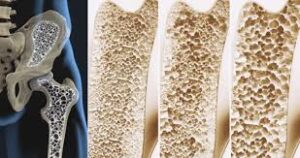A new report published by the ‘Capture the Fracture’ program of the International Osteoporosis Foundation (IOF), in collaboration with Spanish experts, aims to stimulate a change in health policy that addresses the existing gap in the treatment of osteoporosis, since more 1.1 million Spanish women with a high risk of fracture remain untreated, despite the availability of safe and effective drugs.
Without treatment, osteoporosis causes bone fractures that represent an immense personal and social burden, and generate enormous costs for the Spanish health system. Currently, the health expenditure related to osteoporosis amounts to at least 4.3 billion euros per year, of which approximately 2.2 billion are attributed to long-term disabilities.
The report ‘Solutions for the prevention of fractures in Spain’, available in Spanish and English, and prepared with the support of the ‘Capture the Fracture’ Association, describes the burden of osteoporosis and the current political landscape in Spain and, what is More importantly, it offers policy recommendations that would effectively help reduce fragility fractures in the population.

«Given the aging of the population and the current lack of treatment, the number of fragility fractures in Spain is expected to increase by 30% in the next 15 years», stated the former President of the Spanish Society for Bone and of Mineral Metabolism (SEIOMM), Manuel Naves.
«It is estimated that for every 1,000 people over the age of 50 , 12 years are lost due to disability, not to mention the high mortality that follows hip fractures, after which one in three patients dies within two years. Aside from the tragic human cost, this increase in older adults requiring surgery and long-term care threatens to overwhelm the capacity of our healthcare services. Now is the time to apply proven solutions to tackle this growing fracture crisis,» he added. Ships.
The report specifically recommends the implementation of coordinated systems of post-fracture care known as Fracture Coordination Units (FLS). An FLS is used to identify, treat and monitor patients who have suffered a first fracture and who are at increased risk of suffering further fractures, especially in the first two years. Currently, only around 18% of Spanish hospitals have a service of this type.
José Ramón Caeiro, former president and member of the Executive Committee of the Spanish Osteoporotic Fractures Society (SEFRAOS), has declared that «a hospital without an FLS is losing the opportunity to prevent recurrent fractures, which are potentially fatal and costly for the health system «. In fact, one simulation model estimates that increased implementation of FLS across the country would lead to the prevention of an estimated 3,560 subsequent fragility fractures over the next five years, and lead to substantial improvements in patient outcomes, fewer surgeries and fewer hospitalizations. , and greater savings than interventions for other chronic diseases.
In addition to recommending the deployment of more FLS across the country to increase rates of screening, diagnosis and treatment after fracture, the report also calls for health authorities to recognize osteoporosis as a chronic and progressive disease. Currently, despite its immense burden in the elderly population, osteoporosis is neglected in comparison with other chronic diseases. Fragility fracture should also be a priority within healthcare management, even involving primary care providers in the secondary prevention of fractures.
In addition, public awareness of osteoporosis needs to be increased, and one way of doing this is to empower patient associations to communicate the burden of osteoporosis. Finally, the report recommends the expansion of national fracture registries, which would allow health authorities to quantify the burden of fractures and provide data to measure the effectiveness of FLS, patient outcomes, and areas where it is applicable. need to improve quality.
As indicated in the document, an important step forward in the mission of prioritizing osteoporosis and fracture prevention in Spain was the launch of the Platform for the Prevention of Osteoporotic Fractures (PFO) in May 2022, which brings together key players, including influential Spanish patient and scientific organizations in the bone field such as AECOSAR, SEIOMM, FHOEMO, SEFRAOS, among other health-related organizations.
«We thank the leading Spanish experts who have collaborated with the IOF Policy Group ‘Capture the Fracture’ to publish this guide. The report is a unique resource that provides a ‘road map’ of effective solutions that, in synergy, would lead to a reduction in fractures related to osteoporosis in Spain», stated the General Director of the International Osteoporosis Foundation, Philippe Halbout. «If all stakeholders who have a patient interest in the heart work collaboratively and take action at the national and regional level, the result will be fewer fractures, better patient outcomes, lower healthcare costs and, the most important thing, lives saved», has finished.
Fuente: Consalud
 Blog de Fisioterapia Fisioterapia
Blog de Fisioterapia Fisioterapia



